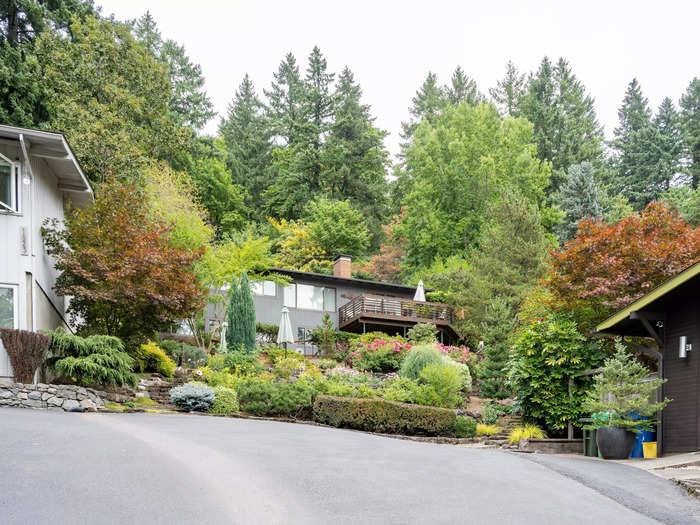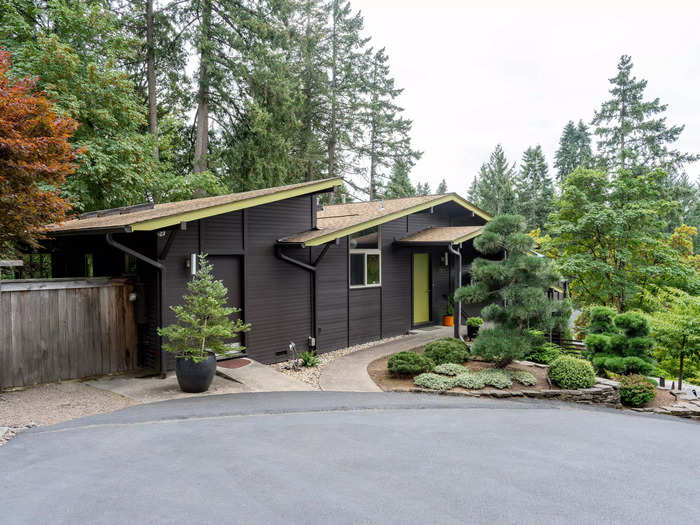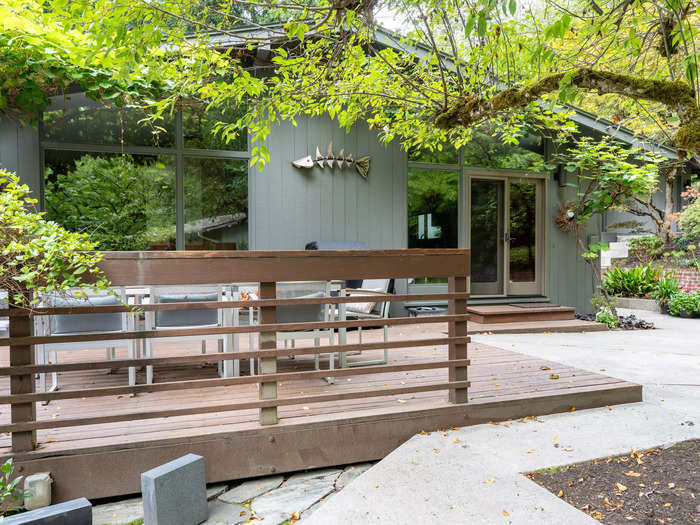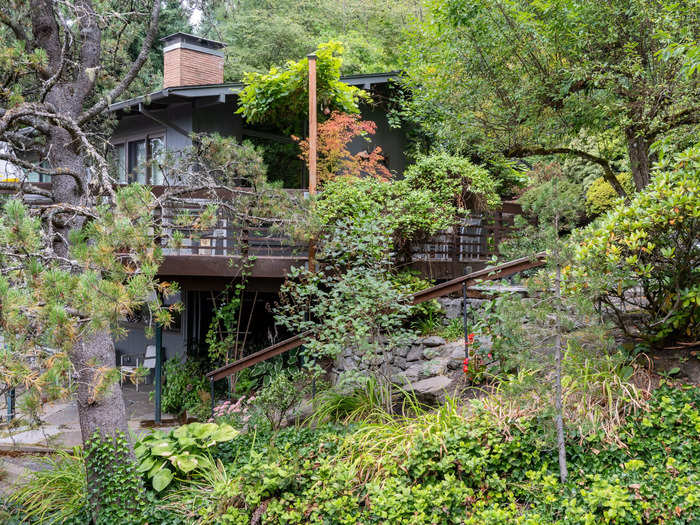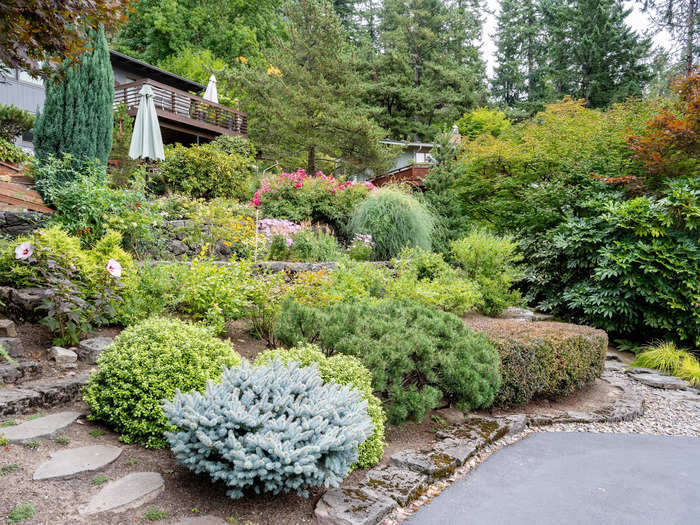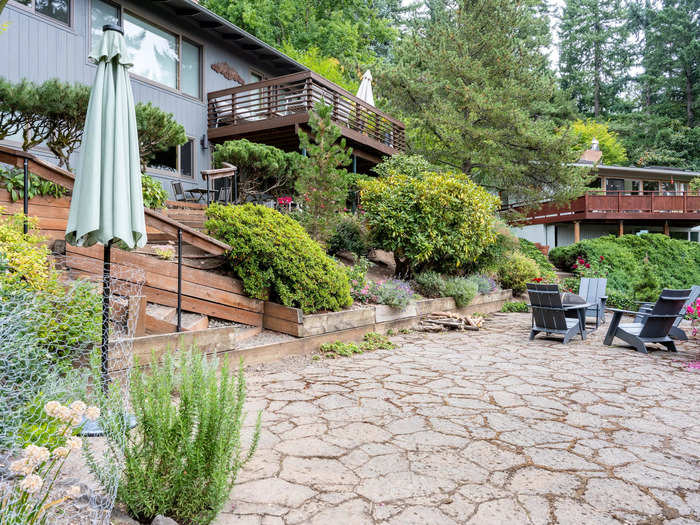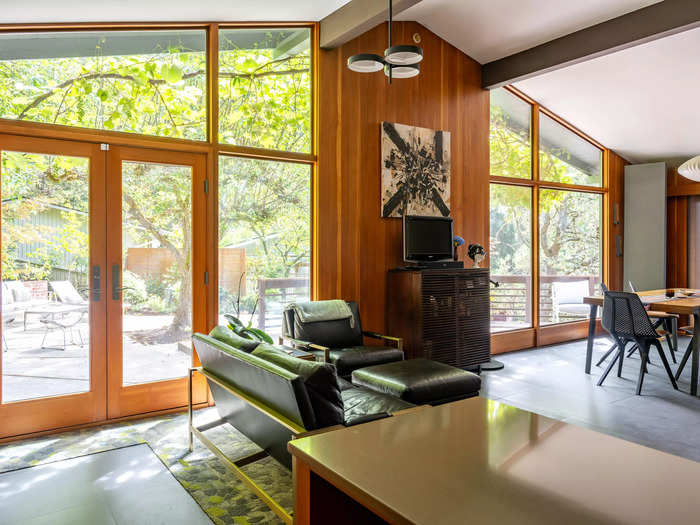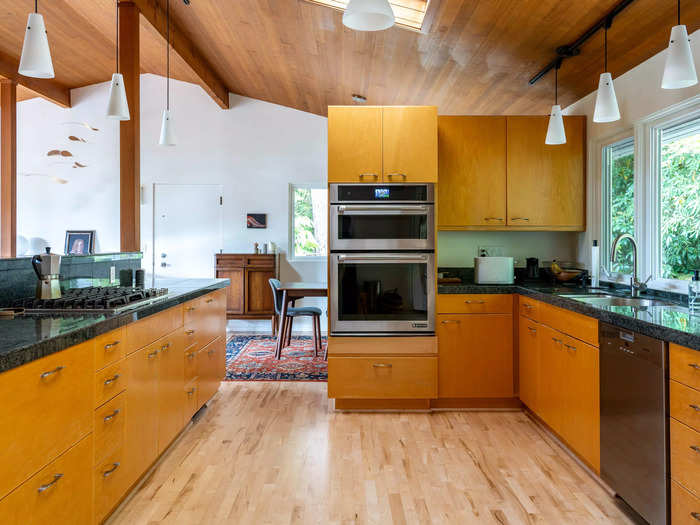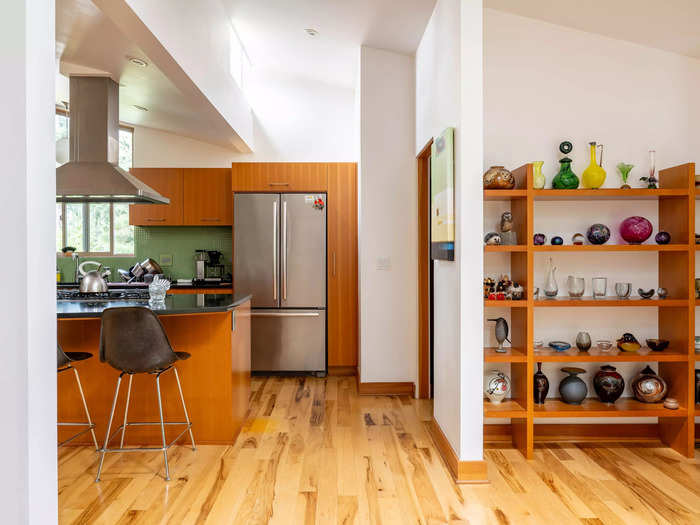The driveway leading up to the quadrant. Timothy Niou
- In 1957, four Oregon families hired a locally famous architect to build them a mini-neighborhood.
- There were 12 kids among the families, and one fondly remembered growing up in the little village.
In 1957, four families based in Portland, Oregon, moved into a village of their own making.
Each couple paid less than $50,000 for a brand-new home designed by an up-and-coming midcentury architect, according to The Oregonian, a local newspaper.
The architect, John Storrs, would go on to become a regional icon, known for warm, natural materials and show-stopping windows. The collection of the four homes became known as the Storrs Quadrant.
How exactly the four couples came together to hatch their home-building plan remains a mystery. As Nicole Possert, executive director at preservation group Restore Oregon, understands it, they all thought it was an ingenious way to build a custom home at a discount.
"The idea was to save money on the architect fee, have all of the homes designed together, and reduce that size of the cost," Possert told Business Insider.
The homes — one of which recently traded for as much as $1.2 million — are now all owned by different people.
A child of the original owners fondly remembers her early years there.
Anne Lezak, whose father stayed close friends with Storrs, said that, because 12 children grew up across the four homes, the quadrant was always a hotbed of activity.
"All of a sudden, there would be a softball game. You could always find someone to play with," Lezak, who now lives in Vermont, told Business Insider.
Recently, the four homes were opened up to the public with a one-time Restore Oregon tour that showed off their architectural significance and ties to Storrs' other work in the Pacific Northwest.
Take a look inside the one-of-a-kind community.
In 1957, John Storrs was a young architect pioneering a design style known as Northwest Regional.
The driveway leading up to the quadrant. Timothy Niou
Storrs' designs shared the sleek lines and wide windows of other midcentury-modern styles.
While some of his contemporaries emphasized concrete and steel in places like Los Angeles, Storrs chose natural materials and warm wooden tones that fit the green, forested Pacific Northwest region.
Four families hired Storrs to build on a jointly-purchased one-acre lot outside Portland, Oregon.
The entrance to one of the Storrs Quadrant homes. Timothy Niou
They paid $50,000 each for the four homes.
Storrs thought the project would be fun and reduced his fee for the four families, former resident Brad Wilson told The Oregonian.
The four homes range in layout from a five-bedroom, three-bathroom to a four-bedrooms, two-bathroom. They all feature outdoor space, original fireplaces, bright hardwood floors, and wide geometric windows.
It's hard to know exactly what they're all worth now, but one of the homes sold for $1.2 million in 2022, according to property records.
The couples drew straws to decide which homes they would live in.
The back deck of one of the homes. Timothy Niou
Even though it was random, each couple apparently felt like they had gotten the best house, said Lezak, whose parents were among the original four families.
"Each of the families felt their house was best situated," she said. "There was no squabbling."
Each house faces out to the road, but the backyards center on a patch that the Quadrant treats as "communal space," even though every house has its own boundaries.
The original families lived in their Storrs Quadrant homes for over 30 years in what Lezak called a "harmonious" environment.
A back deck covered in foliage inside the Storrs Quadrant. Timothy Niou
The couples were social with each other but, most importantly, were always neighborly and kind, Lezak said.
She added that she can't remember any squabbles between the families and that they would often help each other out when needed.
"We had the annual Easter Egg hunt in our yard, because it was the largest, even though we were Jewish," Lezak said.
Lezak said the mini-neighborhood fostered an idyllic childhood.
Shared space among the four houses. Timothy Niou
Lezak said her memories of the Storrs Quadrant include picking blackberries, making mud pies, and stringing together cans between the decks to make pulley systems.
The children often played kickball and freeze tag, she added.
Lezak knew the houses were special, even if she didn't understand their architectural significance at the time.
A deck inside the Storrs Quadrant. Timothy Niou
As a child, Lezak said, she noticed each of the homes had similar layouts, with an "open, wooden, midcentury-modern structure."
But the architectural details she remembers most are which closets across the four houses held the Archie comics.
"Those were the things that mattered to me," she said.
Storrs went on to design other iconic structures in Oregon and the Pacific Northwest.
Inside one of the Storrs Quadrant homes. Timothy Niou
Storrs designed a luxury resort, Salishan Coastal Lodge, known for its stunning views of the Pacific Ocean.
He also designed the Western Forestry Center and the Portland Garden Club, which have wood-lined interiors, big horizontal windows, and exposed beams.
Storrs stayed in touch with the families, Lezak said.
A family room inside one of the homes. Timothy Niou
Storrs would attend weekly parties at the Lezak home, she said.
"It must've been nice for him to see those four houses flourishing," Lezak added.
Today, each house has a new owner. But they remain in mint condition.
A kitchen in the Storrs Quadrant. Timothy Niou
Kristin Hammond and Matt Demarest, who own one of the homes, said the communal atmosphere of the Quadrant lives on.
The current owners will get together to socialize every so often and look out for one another, Hammon added.
"We have each other's back when people are out of town," she told Business Insider.
Recently, 120 people got to see inside the homes via tours organized by Restore Oregon.
A living room in the Storrs Quadrant. Timothy Niou
The Storrs Quadrant wasn't widely known until recently, Possert, of Restore Oregon, told Business Insider.
The preservation group jumped at the chance to show off a little pocket of regional history in a one-time tour, she added.
"It was a little quiet secret," Possert said. "We really like to bring forth how important it is to preserve parts of our recent past."

